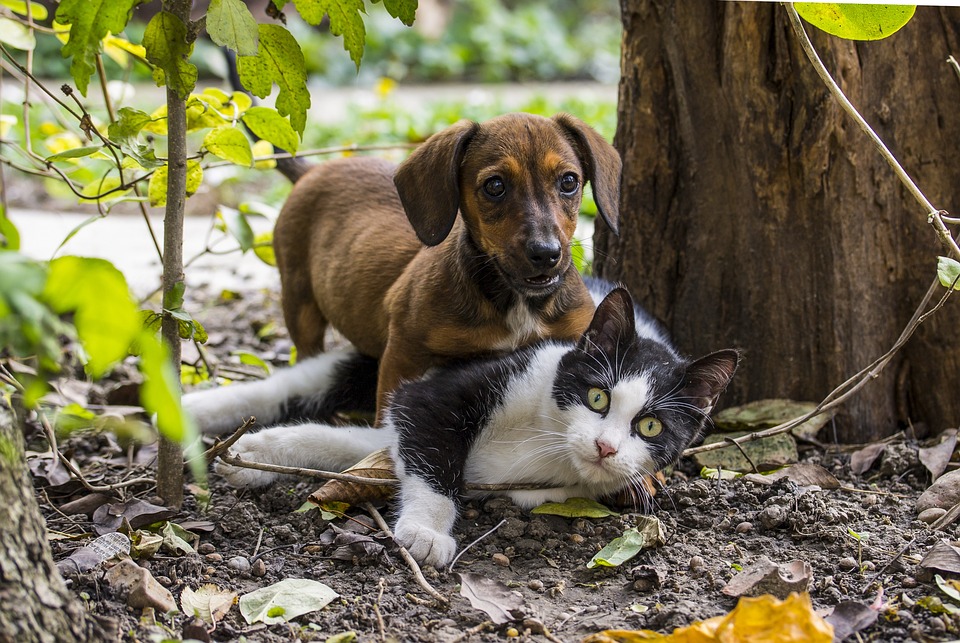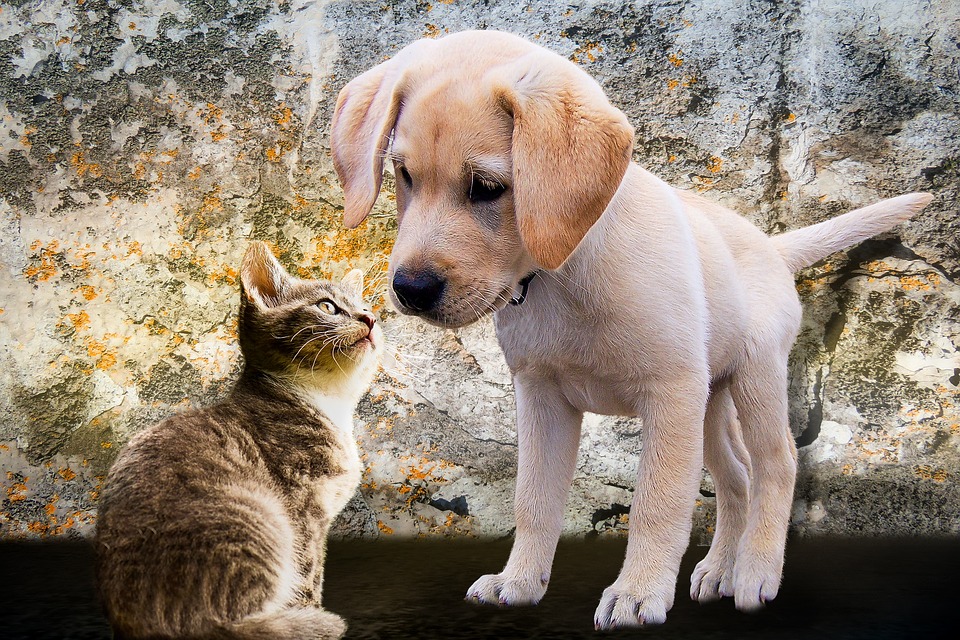
Relationships and Understanding Between Cats and Dogs
Summary
Socialization of cats and dogs
The role of owners in getting along with cats and dogs
“Getting along like cats and dogs” is a famous saying that implies that the two species are not a good match, rightly so because the dog is the cat’s predator.
Nevertheless, both domestic animals have learned to live together in their owners’ homes. How do they get along and even bond when they live under the same roof?
Socialization of cats and dogs

Domestication has allowed to select of a lesser hunting instinct for animals living under the same roof and to redirect this instinct towards animals considered pests or prey that man and dog hunt together:
Second, all animals are born and live freely in these communities. They socialize with each other from a young age.
Puppies and kittens have a sensitive period during which they accept and enjoy contact with potential play partners, whether they are fellow animals or animals of different species.
They learn in a playful way to understand each other and share the same territory they never leave.
Therefore, there are 3 processes in the agreement between the dog and the cat: two cognitive ones, socialization and education (learning to live together by respecting all the farm animals), and one of artificial selection by eliminating predators.
When dogs and cats have always lived together, their tolerance and socialization can be restricted to animals sharing the same territory or, on the contrary, be generalized to the species:
If the dog is adopted and changes families and places, and human education has not channelled its hunting instinct, it may chase or even attack intruding cats. If the dog’s socialization has allowed it to become attached to the cat, it is likelier to do well with unfamiliar cats. This is especially true for bitches who have a maternal instinct.
If the cat is adopted and moves to a new territory, its prey and survival instincts will initially take over. It must first feel comfortable in its new environment to accept the dog. The dog’s temperament must also be calm and playful but not noisy or excited.
The age of the encounter is essential: young animals are made to get along. When there are age differences, it is temperament and sex that will influence the relationship.
Unspayed females are more receptive and friendly if you don’t introduce a dog into a house with a cat with her litter.
An old cat will not necessarily appreciate the company of a young, energetic dog, especially if it feels weakened by age and joint pain.
Role of the owners in the good understanding of the cat and the dog
The positive experiences will allow a harmonious cohabitation, so owners can not rely on chance when the meeting is between a predator and its prey.
The house is the cat’s sanctuary, and the garden, or the outside, is often the dog’s playground. Each one has its own needs, so it is important to respect them.
Tips for adopting a dog
Please don’t choose a dog from a hunting dog farm: labradors, golden retrievers or cocker spaniels, for example, are hunting dogs, but they are also bred as companions and assistance dogs.
The dog being the predator and, therefore, the potentially dangerous animal in the cat/dog relationship, it is up to you to rely on your dog’s behavior to socialize with your cat.
In practice, spending more time controlling the newcomer is essential: you organize pleasant activities for the dog outside the house, walk him through tiring him out, and make him play in the garden. The house will be a place of rest and companionship.
Serve the cat’s dinner before the dog’s, and don’t leave the kibbles in free service if the dog is greedy, or you can put the kibbles out of its reach.
Do not let the dog bother the cat in any way. If the dog is intrusive in your relationship with your cat, push it away.
Do not allow your dog to interfere in your relationship with your cat, especially when scolding the cat and during cuddling sessions.
Reward the dog for any self-control behavior in situations that may create jealousy (when he stays in his basket, moves away from the cat’s bowl, comes when you call him and stops what he is doing if you ask him to…).
Do not let your dog chase or growl at the cat.
Do not allow your dog to take over your cat’s toys or sleeping areas; do not let your dog go to the litter box.
Do not reprimand your cat if it is defensive: it is its survival instinct. Organize the territory to prevent this behavior and avoid the cat scratching the dog.
Tips for adopting a cat
When a cat arrives in its new home, it is anxious because it loses its bearings and hiding places. Until it feels comfortable, do not let it go outside, reserve a room that will be forbidden to the dog and spend the time necessary for the cat to become fond of you and its environment.
The cat must become your priority, and your dog will accept it without any problem if you devote time to it for walks and outdoor games.
Prefer to adopt a young cat who still likes to play because dogs love that.
Choose a cat that had lived with a dog before or was born into a family or cattery with a dog that was friendly to cats.
Ask about the cat’s history, and don’t get a cat that a dog has attacked.
Allow the cat to climb the furniture or buy a cat tree that is large and tall enough for the cat to escape the dog if it feels threatened or is chased by the dog. Your cat needs to be able to observe safely. If it hides under the furniture, the cat will not be able to watch the dog’s attitudes and facial expressions, will not be able to see if the dog is sleeping, and will be stuck for hours in its hiding place.
Keep the cat locked in its room or the dog in the garden when you are away, and only leave them unattended once a positive relationship has been established and your cat has conquered its territory.
Remember that dogs and cats get along well together if they feel confident and the dog’s predatory instinct is low.





